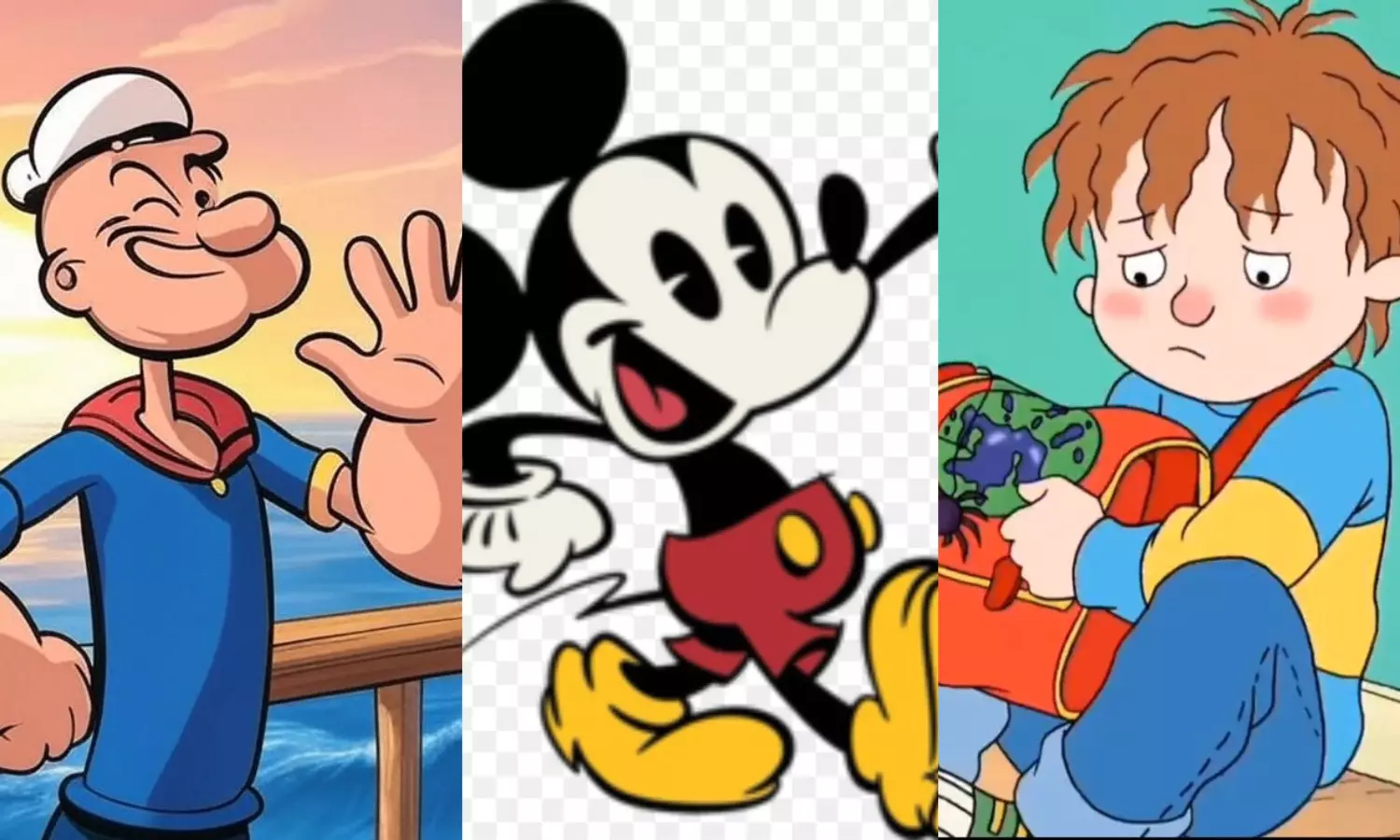‘Smash’ & ‘Hit’ Cartoons Awesome or Worrisome
The nonstop slapstick violence in children’s cartoons has raised concerns about its impact on the emotional development of kids and the need for mindful content curation

Representational Image
The nonstop caricatured violence — smash, slap, hit, kick, punch, bang, boom, gag in cartoons has long been a source of entertainment for children. However, many parents fear that the vicious cycle of violence in cartoons does have an impact on the emotional development of kids. There is a growing concern over it. While some parents call for more mindful content, others defend the timeless humour of classic cartoon shows. A few, nudge their kids to go outdoors and play with friends instead of watching Looney Toons indoors.
Timeless classics like Mickey Mouse, Tom & Jerry, and Popeye The Sailor have not only entertained generations but also carved a lasting place in childhood memories with their humour and nostalgic charm. However, once hailed for their gentle humour and universal appeal, parents are now scrutinizing many toon shows for their violent streak. Many feel that the cartoon characters are often embroiled in bullying, dangerous fighting, or emotionally charged situations. While the ya “G” rating is meant to signify content suitable for general audiences, including young children—concerns about the tone and themes of such shows often show violence casting doubt on its appropriateness for its youngest viewers.
A SHIFT IN TONE
Gone are the days when Tom and his antics used to make us laugh till our stomachs hurt.
Many parents feel the episodes often depict scenarios rife with angst, yelling, impatience, and even violent undertones, ranging from fires and angry mobs to the use of toy guns and near-death situations.
Anisha Mehra, a Bengaluru-based mother of a four-year-old, is unsettled by this shift. “I grew up on Disney, and I expected the same wholesomeness for my child. But the prolonged viewing of today’s cartoon shows has made my toddler more hyperactive than entertained,” she says.
This sentiment is echoed by Arjun Patel, a Mumbai-based father of two. “I don’t mind some silliness but shows like Horrid Henry or Courage the Cowardly Dog seem to focus more on fren- zied chaos than humour. It feels like the characters are always angry or afraid, which doesn’t set the right tone for kids who absorb everything they see.”
EXPERTS WEIGH IN
An experiment by a research group at the University of Washington points out that young children are particularly sensitive to the emotional cues of the characters they watch on screen. It further elaborates on how children are prone to mimic what they see which shapes their understanding of emotions and problem-solving. So, when these characters exhibit excessive impatience, anger, or fear upon facing any issue, children are likely to imitate similar irritation in their daily lives.
Dr. Aditya Tiwari, a psychiatrist from Mumbai says, “While it’s true that children learn what they see, you still cannot single out viewing of violence in cartoons as the sole reason for bad mental health.” He further explains that factors like screen time and witnessing conflict or violence between parents are also major factors in shaping a child’s mindset and coping mechanisms. “Parents should monitor their child’s media diet but also prioritize screen-free quality time to foster better emotional development,” he adds.
However, a few parents have also vouched for classics like Tom & Jerry and Mickey Mouse, stating that it has been a great source of entertainment for their children. “My kids love Tom and Jerry! They even tease each other by calling one another Tom or Jerry, just to stir up some playful mischief, so the show is not problematic for me,” says Jamaica D'lima, a resident from Mumbai.
Ruchika Nath, another parent from Mumbai, states that she is not very overprotective of her daughter’s media consumption. “Although I ensure that she is only exposed to age-appropriate content, I haven’t restricted her from watching cartoons as such. The only thing I monitor is her screen time,” Ruchika states. Tiwari observes that mod- ern parents often prefer ‘edutainment’ content over light-hearted, humorous shows. “Edutainment programs like Dora the Explorer or Peppa Pig are fine, but I’ve rarely seen a child laugh wholeheartedly while watching them. In contrast, shows like Tom & Jerry leave kids thoroughly entertained.”
THE TOON DEBATE
Email and messages sent to Disney Star officials via Linke- dIn on December 17, 2024, did not get any response. The debate surrounding cartoons underscores a larger conversation about the role of media in shaping children’s emotional and behavioral development. While entertainment giants like Disney and Warner Bros.-owned Cartoon Network have a rich legacy to uphold, modern parents are demanding more transparency and responsibility in how family-friendly content is crafted and presented. While some advocate for greater mindfulness and responsibility from creators, others cherish the nostalgia and humour of classic cartoon shows. They find them harmless. Striking a balance might be the key — acknowledging the need for content that respects a child’s mental well-being without entirely sanitizing the joy and creativity that cartoons bring. After all, the goal is not to shield children from every challenge but to equip them to navigate a world where both humour and responsibility coexist.
( Source : Deccan Chronicle )
Next Story
